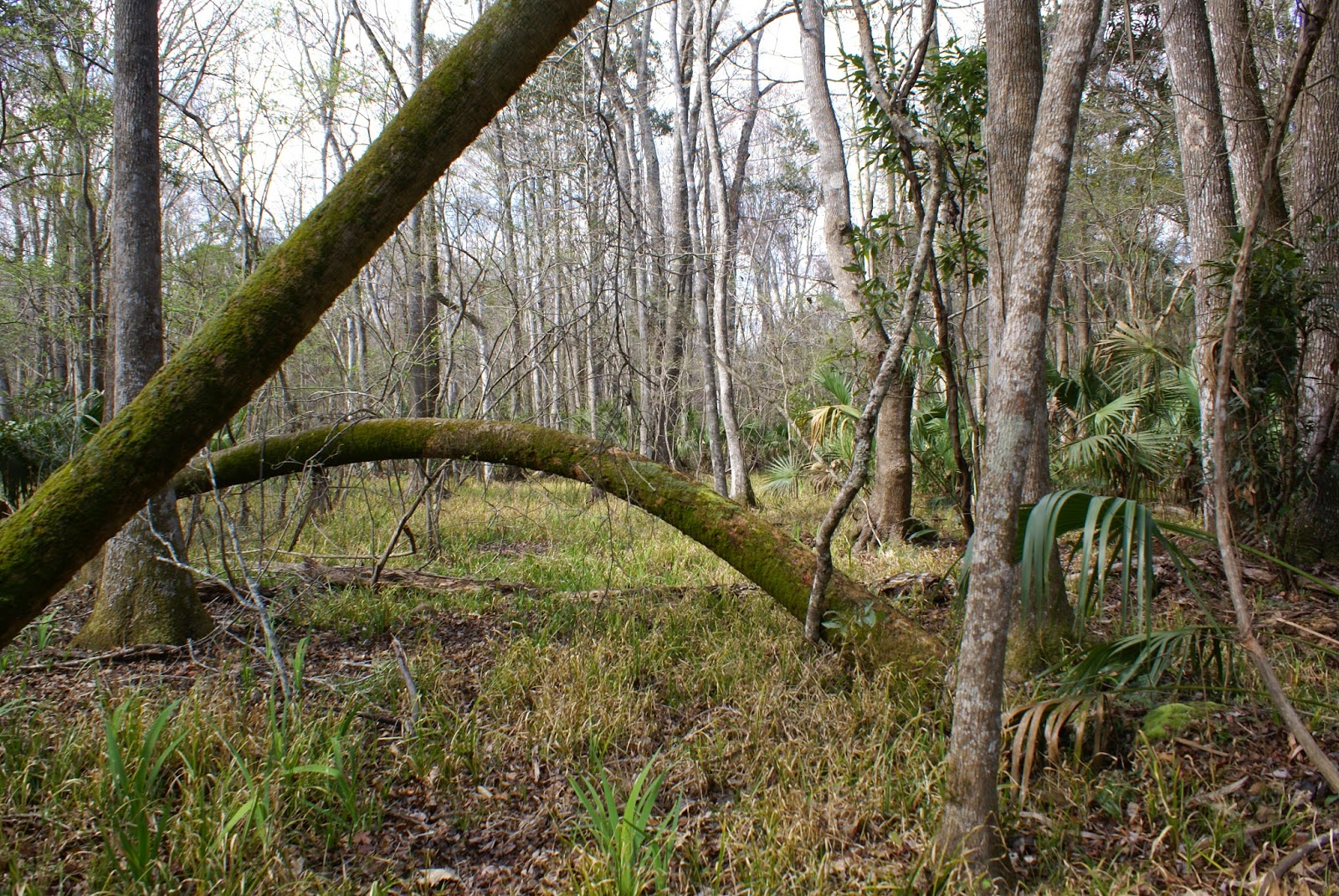Jefferson County’s Rivers: Florida’s Frontier
We drove to Mandalay at dawn, sliding an open boat into the Aucilla.
Charlie Ward handled the tiller with Jack Carswell beside him. I rode amidships
to take pictures.
Charlie picked out his route along the curved riverbanks.
“Sharp rocks hide under the surface of this water. One of them can rip this
boat to pieces.”
We entered a maze of channels between curving stretches
of marsh grasses dotted with palms, twisted cedars and willows. At Apalachee
Bay Charlie pointed out Saint Marks Lighthouse and the almost hidden mouth of
the Pinhook.
Charlie said the Pinhook is mostly limestone under the
reeds and grass. Trees rooted directly into slabs of moss-covered limestone
hang over the water, closing out the sun.
The
river narrowed and banks came closer until our boat stopped, the keel caught on
a tree fallen across the water. Grabbing a nearby limb in one hand, Charlie
yanked on the side of the boat and gunned the motor, sliding us across.
We finally turned to head back through the tunnel of
trees. When we came out in the open the sky was dark. As soon as we ran clear
of the narrow part of the river we sped up, ignoring the danger of hidden
rocks. We were unsure whether to head back to the Aucilla or make for Saint
Marks by open water where we would be safe.
The sky turned purple and black, and a strong wind picked
up. After a few miles of wind blowing in our faces the clouds moved on to our
west. The sun came back out.
As we turned north back into the Aucilla, we saw a
gathering of Wood Storks resting on the limbs of a dead tree. One turned his
back and spread his wings to show his eight-foot wing span.
Overhanging tree limbs cast intricate patterns on the
water. We turned left at Ward Island where Charlie stopped at a floating dock.
Pointing to a path up the hill he said, “Climb up there and you’ll see a real
family fishing cabin. Those folks hauled every stick of lumber in here on a
boat.”
The weathered structure looked shabby but sturdy. A
covered porch protected a line of chairs backed up to the wall. I could picture
a family enjoying the solitude--adults resting on the porch and children
yelling as they played in the woods nearby.
Leaving the river, we followed the same route back to
Monticello. Soon Charlie turned onto a narrow lane to show us the headwaters of
the Wacissa River.
The Wacissa is pristine—as clear as the
springs that feed it. Narrow and twisted, it is land-bound and finally
disappears into the earth. Its waters connect with the Aucilla through a “Slave
Canal,” cut by hand in antebellum times.
A large part of Jefferson County is like these rivers,
still unchanged in hundreds, perhaps thousands of years. Much of the route we
covered on this trip is a land and waterscape untouched and undamaged, rare and
beautiful.



























.JPG)

